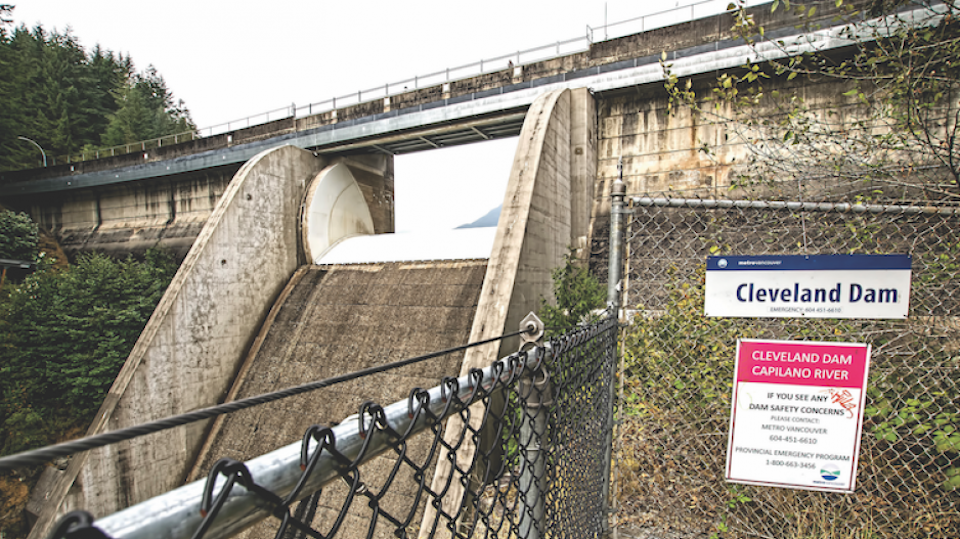A husband and wife caught up in the sudden and deadly flooding of the Capilano River in October 2020 are suing the Metro Vancouver Regional District and the Greater Vancouver Water District, claiming the Cleveland Dam’s lack of warning systems is dangerous and inadequate.
In separate lawsuits filed on September 1 in BC Supreme Court, Mateusz Wiack and his wife, Chihiro Nakamura, claim they were visiting Capilano River Regional Park in North Vancouver in the early afternoon of Oct. 1, 2020. The park is downstream from the defendants’ Cleveland Dam, which abuts Capilano Lake, also referred to as the Capilano Reservoir. Wiack and Nakamura, according to their notices of civil claim, were sitting on a rock in a shallow section of the river just south of the Cleveland Dam on the day of the sudden flooding.
“Suddenly and without warning the plaintiff could hear a rushing sound behind him,” Wiack’s lawsuit states. “When he turned his head around, he saw a wall of water rushing toward them, and he yelled to his wife sitting beside him to run.”
The plaintiffs claim the defendants’ employees had opened a drum gate of the Cleveland Dam that quickly flooded the river with a torrent of water that killed a person, while another remains missing and is presumed to have died in the flood. Meanwhile, other people at the park were trapped, four of which were later rescued.
“The height of the rising water was quickly rising around them as they tried to make their way to the shore. [Wiack] was unaware that his wife slipped and fell in starting and in following him the force of the water separated them and she fell further behind him,” the lawsuit states. “He could not reach her and while he swam to shore, she was able to grab and to climb onto a tree angling out from the edge of the river.”
Nakamura had to straddle the tree as the water level increased around her, and Wiack’s claim describes his frantic attempts to save her with a piece of wood that was “violently pulled away from him” by the strong river currents. He managed to call 911 as he “ran back and forth” from an embankment near where she was stranded on the tree in danger of being “swept away” by the rising tide.
“Only when the waters began to subside did a firefighter rescue team arrive and eventually were able to help her off of the leaning tree and to shore,” the claim states.
The river level on that day rose more than three metres, according to the lawsuits, and both Wiack and Nakamura claim they suffered from “nervous shock,” post-traumatic stress and other injuries.
They claim the Cleveland Dam at the time “did not have any or any adequate alarms or warning systems to warn visitors to the park [and] should therefore be a malfunction or human error in the operation of the flow levels of the water escaping from the dam, despite a history of dangers and harms from this source known to the defendants.”
They seek unspecified damages for pain and suffering, loss of income and loss of enjoyment of life. The allegations have not been tested or proven in court, and the defendants had not responded to the lawsuits by press time.



